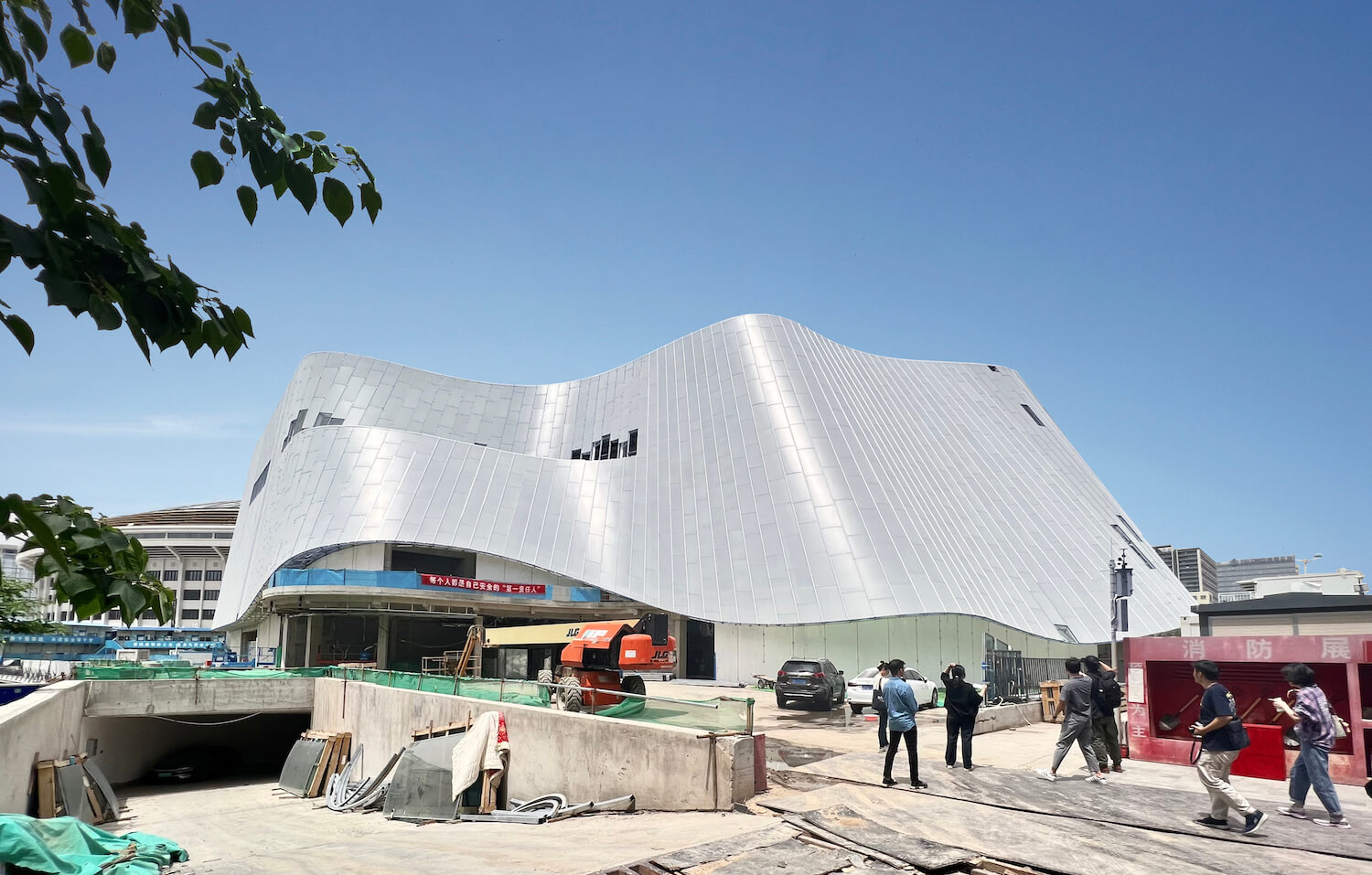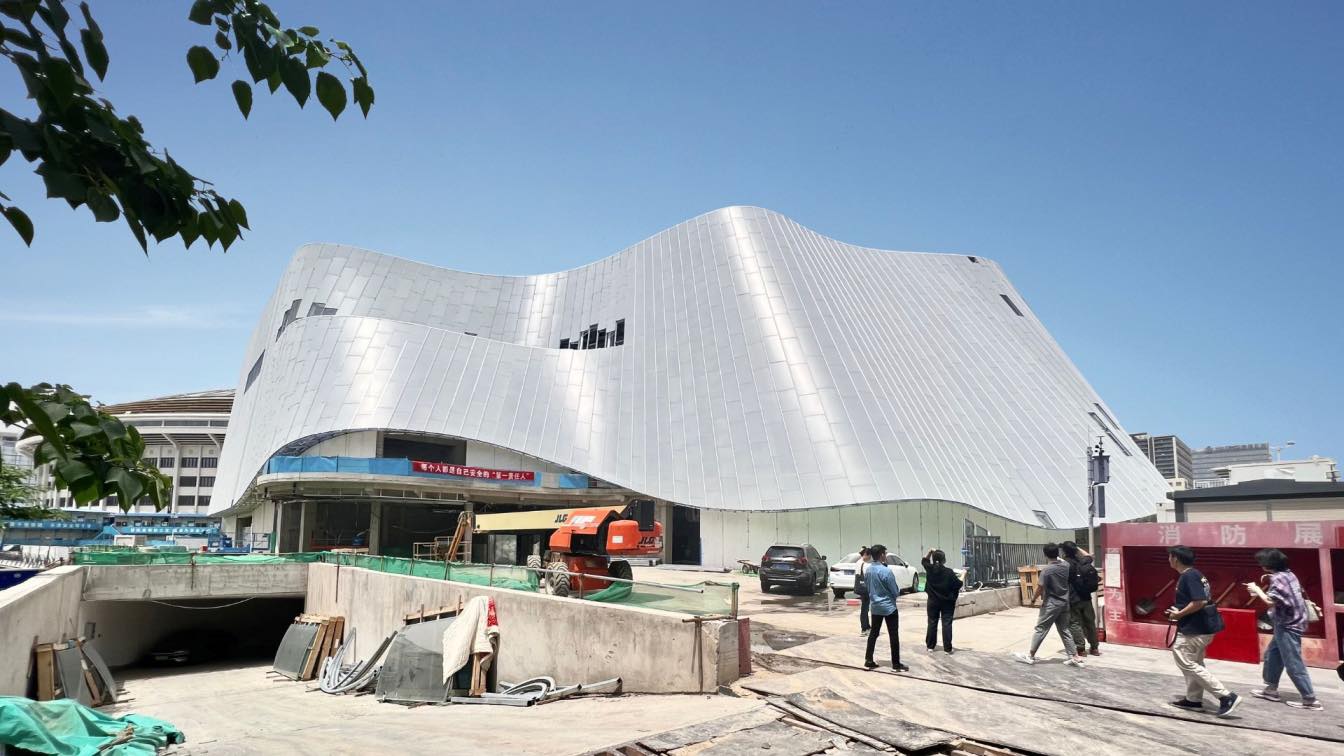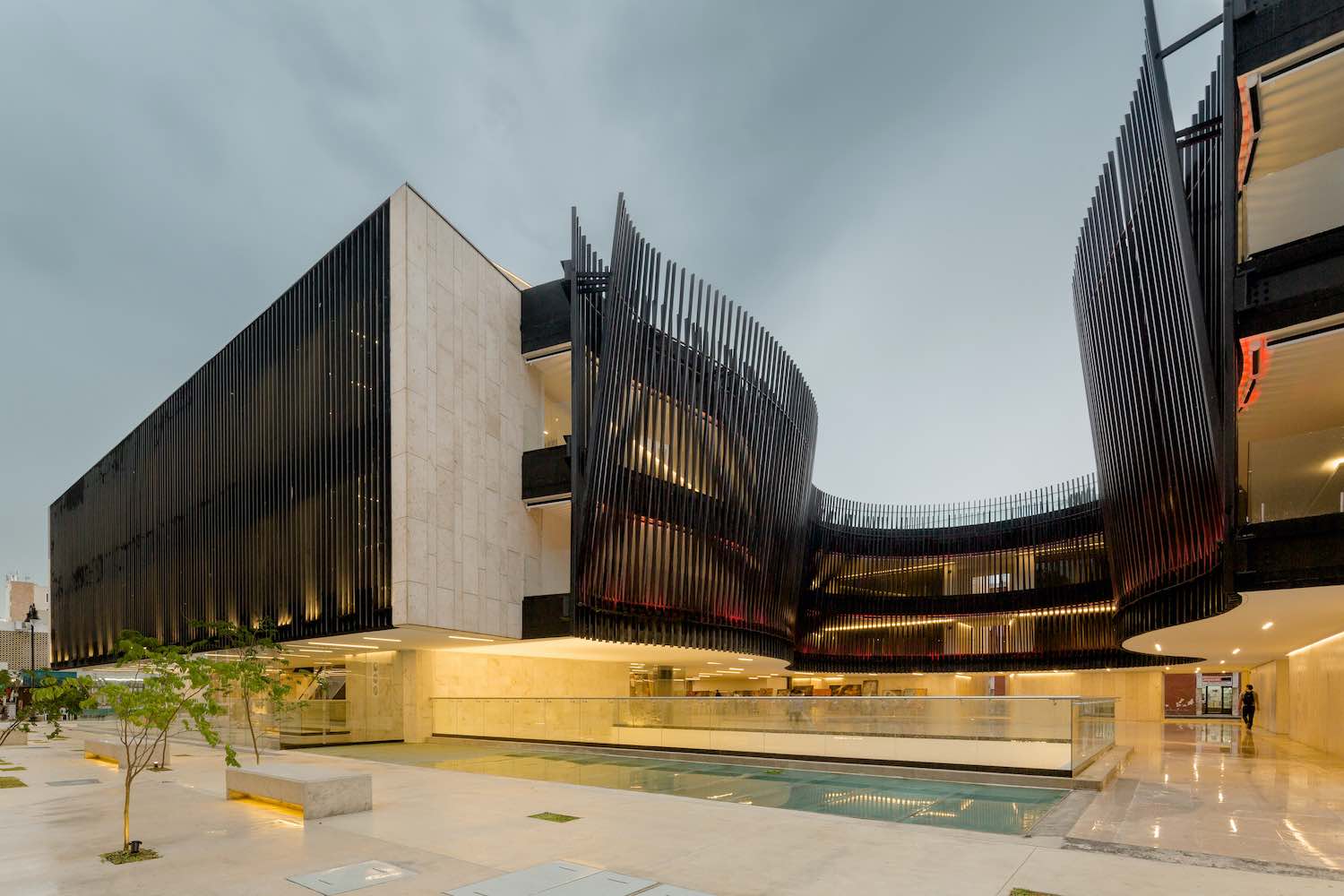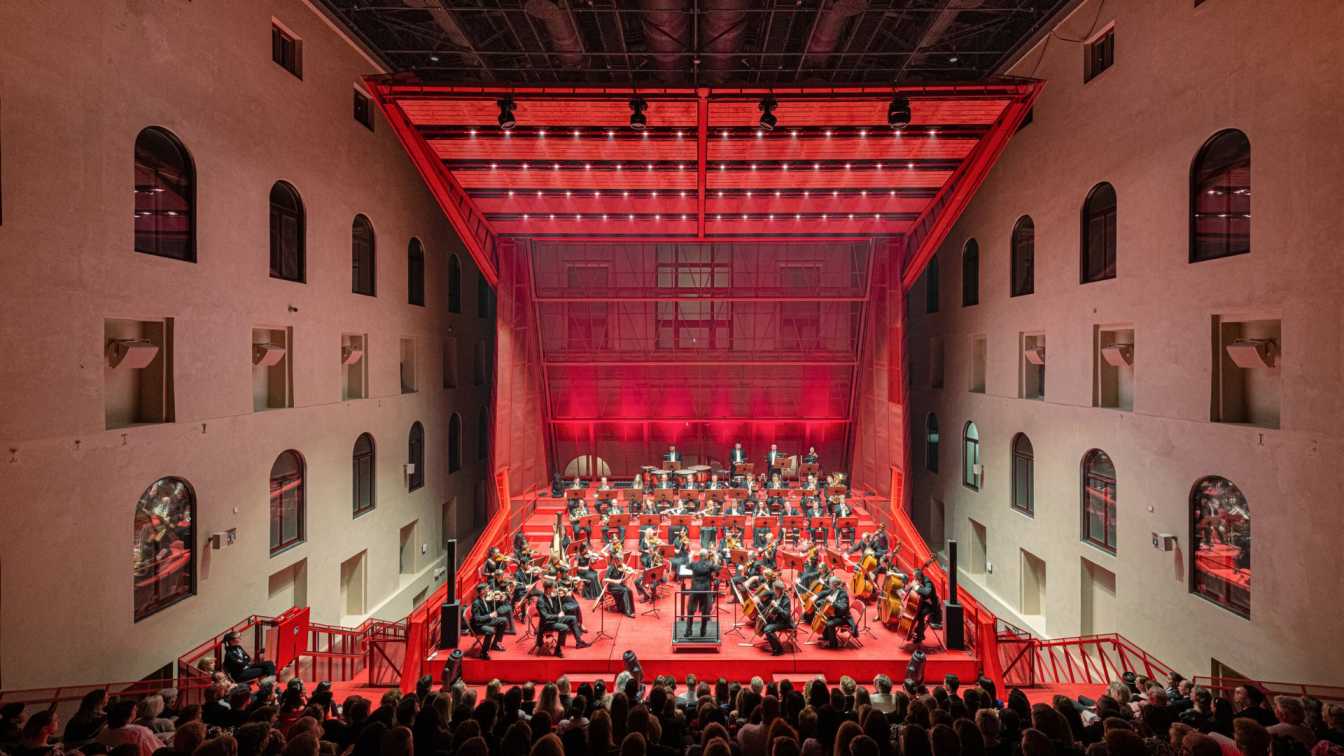MAD architects, led by Ma Yansong, is nearing the completion of the China Philharmonic Concert Hall in Beijing, China, for which the firm won the design competition in 2014. With an overall site of 11,600 sqm and a total building area of 26,000 sqm, the concert hall is one of the most significant cultural projects in the nation’s capital. It will become the first permanent residence for the China Philharmonic Orchestra, which gave rise to a new generation of symphonies in China.
The concert hall is located on the south side of the Workers’ Stadium, one of the most vibrant retail, entertainment and nightlife regions in Beijing. Carving out a space of tranquility, the project was envisioned as a peaceful respite from the bustling environment that surrounds it; a space in which an active dialogue between classical music and contemporary life could take place.
The music venue consists of a main concert hall and rehearsal spaces split between two floors. Surrounded by a lotus pond and greenery that will be open to the public, the architecture is defined by a fluid and translucent façade reminiscent of a piece of jade. Daylight is diffused through the translucent white curtain wall into the lucid space. At the center of the soaring lobby, a grand spiral staircase connects the curvilinear hallways to provide a dynamism akin to the flow of music.

The 1,600-seat grand concert hall is organized in “vineyard style,” visualized as sloping terraces and serried rows. On the south side of the building, a 350-seat rehearsal hall is nestled within curved wooden walls shaped to optimize acoustics. The white sound reflection panels on the ceiling, formally inspired by lotus flowers, are additionally optimized to make the music sound mellow and pleasant. By adjusting the molding angles and positions of the ceiling, wall and reflection panels, the early reflected sound from different distances can evenly cover the stage and auditorium to allow the arrival time of the sound to be balanced across the entire space.
The world-class organ by Casavant is composed of 88 pipes, with different heights and mouth positions appearing like a field of bamboo with cylindrical feet from the base rather than the typical conical form. The integrated experience of acoustic floating projections and a daily transition from daylight to artificial light create an immersive multi-sensory space that will prepare audiences for a spiritual music journey that washes away the venue’s urban surroundings.
The façade system adopts embossed glazed glass that makes the building appear white and pure while bringing sufficient natural light to the interior. This system is combined with the fabric structure to form a monumental “light box.” The lighting devices are installed parallel to one another on the main steel structure and longitudinal structure to illuminate the translucent membrane surface from behind and softly brighten the façade through secondary reflection. The number of devices gradually reduced from the eastside of the building so that to create an ethereal lighting effect from a distance.
The China Philharmonic Concert Hall will become a pure and sacred oasis in the middle of the city, providing a state-of-the-art performance venue that fosters cultural exchange and stands as China’s new locus for classical music. It is expected to be completed in 2024.



















